Kenneth L. Gentry Jr.'s Blog, page 50
December 29, 2020
PROTOLOGY & ESCHATOLOGY (1)
 PMW-2020-111 by Kenneth L. Gentry, Jr.
PMW-2020-111 by Kenneth L. Gentry, Jr.
The postmillennial hope looks to the unfolding victory of Christ’s kingdom in history. In fact, the glorious dominance of his kingdom is the very goal of history. God’s plan was for man to exercise dominion over all creation (Gen 1:26–28). Immediately upon Adam’s Fall, God instituted redemption which was designed to crush the head of Satan and his kingdom (Gen 3:15).
Later God informs Abraham of his plan for universal blessing that was to be brought through him: “In you all families of the earth will be blessed” (Gen 12:3b). And King David rejoiced in this prospect:
“All the ends of the earth will remember and turn to the LORD, / And all the families of the nations will worship before You. / For the kingdom is the LORD’S / And He rules over the nations.” (Psa 22:27–28)
Given God’s plan and his sending his own Son to accomplish that plan, Jesus declared as he faced the cross: “Now judgment is upon this world; now the ruler of this world will be cast out. And I, if I am lifted up from the earth, will draw all men to Myself” (John 12:31–32). Christ fully and confidently expected historical victory for God’s plan, and therefore commissioned us to labor for it:
“Jesus came up and spoke to them, saying, ‘All authority has been given to Me in heaven and on earth. Go therefore and make disciples of all the nations, baptizing them in the name of the Father and the Son and the Holy Spirit, teaching them to observe all that I commanded you; and lo, I am with you always, even to the end of the age’” (Matt 28:18–20).
As It Is Written: The Genesis Account Literal or Literary?
Book by Ken Gentry
Presents the exegetical evidence for Six-day Creation and against the Framework Hypothesis.
See more study materials at: www.KennethGentry.com
Jesus was confident in his Father’s plan and his own authority. And so should we be.
Creation Is Linked to Consummation
As I point out in my book He Shall Have Dominion, creation and consummation are intrinsically related. In biblical theology, eschatology requires protology. This is because as Genesis commentator John Currid notes: “the Hebrews held to a linear history. They believed there was a beginning to time and creation (cosmogony) and a movement to a consummation (eschatology).” The end is entailed in the beginning.
I am as strongly a Six-day Creationist as I am a postmillennialist. I believe the two go together well, like love and marriage! Both approach Scripture seriously; both help frame-in a holistic world-and-life view; and both are firmly committed to the historical trustworthiness of the biblical record — regardless of what liberals and pagans think. Therefore, both Six-day Creationism and postmillennialism are abhorrent to the unbeliever, but should be admired by the believer.
I have recently written a book that has been published by New Leaf Press (February 2016). It is titled: As It Is Written: The Genesis Account Literal or Literary? In this work I basically seek to accomplish two ends: (1) Demonstrate the exegetical and theological foundations for Six-day Creation; and (2) Highlight the exegetical and theological errors of the Framework Hypothesis. I believe this is important to do — as a foundation to the postmillennial hope.
I open As It Is Written with the question: Why should we study Creation? I provide a six-point rationale that was presented by theologian Millard Erickson:
1. The Bible stresses this doctrine, even opening with it.
2. The doctrine of creation is in creeds, showing it is an important element in traditional Christianity.
3. The unity of biblical doctrine requires the doctrine of origins: we have eschatology and therefore need protology.
4. The biblical doctrine of creation is distinctively different from other religions and philosophies, and therefore sets Christianity apart from them.
5. Biblical creation confronts modern secular, naturalistic science, which is dominating our culture and is the Christian faith’s leading philosophical enemy.
6. The doctrine of creation is essential to the ultimacy of God: it declares that God alone is creator of universe.
Adam in the New Testament
by J. P. Versteeg
Carefully examining key passages of Scripture, Versteeg proves that all human beings descended from Adam, the first man. He argues that if this is not true, the entire history of redemption documented in Scripture unravels and we have no gospel in any meaningful sense.
See more study materials at: www.KennethGentry.com
The Framework Hypothesis
One of the leading evangelical re-interpretations of the Genesis creation narrative today is the Framework Hypothesis. This hypothesis holds that Genesis 1:1–2:3 presents God’s creation as a seven-day week for a literary (theological and symbolic) framework and is not intended to indicate the literal chronology or duration of the acts of creation.
As I show in great detail, the Framework Hypothesis is built on three exegetical foundations:
(1) The triad of days. This argues that the creation of light on Day 1 parallels the creation of the sun on Day 4 and are therefore not successive days, but two ways of saying the same thing. The same is true of Day 2 (waters and sky) paralleling Day 5 (fish and birds), as wells as Day 3 (land) paralleling Day 6 (land animals and man).
(2) The providence of creation. This understand Genesis 2:5 as declaring that God used ordinary, gradualistic providence in Creation week and avoided “unnecessary supernaturalism.” Meredith Kline states regarding this verse that it provides “conclusive exegetical evidence . . . that prevents anyone who follows the analogy of Scripture from supposing that Genesis 1 teaches a creation in the space of six solar days.”
This is drawn from the following biblical statement: “Now no shrub of the field was yet in the earth, and no plant of the field had yet sprouted, for the Lord God had not sent rain upon the earth; and there was no man to cultivate the ground.” This, according to the Framework advocates, states that before plants cold sprout, rain had to begin — which is the natural way things are today.
(3) The two-register cosmogony. That is, Klinean Framework proponents argue that interpreters must recognize that Gen 1–2 involves two perspectives: the one from above (God’s heavenly world) and the one from below (the temporal, earthly order). They warn that we must recognize some aspects of the Creation narrative present an analogical perspective on creation. That is, it presents God’s work in “creation week” analogically, using man’s experience as an analogy of God’s work. Therefore, Moses employed a seven-day week to present Creation because man has a seven-day week.
In my next article I will briefly demonstrate the error in the three-fold exegetical argument for the Framework. In the meantime, don’t work too hard: don’t engage the Beatles’ suggestion of “Eight Days a Week.” God only gave us seven!
Click on the following images for more information on these studies:

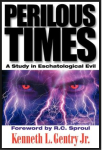

December 25, 2020
CHRISTMAS AND POSTMILLENNIALISM
 PMW 2019-103 by Kenneth L. Gentry, Jr.
PMW 2019-103 by Kenneth L. Gentry, Jr.
Christmas is here, and quite appropriately it will be followed by a new year. Since Christ came to effect a new creation!
We must not forget the message of Christmas; we must take it with us in the new year God is granting us. So as we enter this season, let us consider the postmillennial hope embedded in Christmas. Unless my memory fails me, Bing Crosby sang: “I’m Dreaming of a Postmillennial Christmas.” If he did not, he should have! Whereas Elvis was apparently an amillennialist when he sang: “I’ll Have a Blue Christmas.” Which might explain the howling of the Jordanaires in the background of this song.
Postmillennialists can easily use Christmas texts to present the postmillennial hope. In doing such, they show that Christmas should not simply create a momentary joy as we turn our attentions away from our problems for a brief period. Rather Christmas is deeply embedded in the postmillennial hope.
One of the key prophetic texts that speaks of the coming incarnation and the resulting story of Christmas is Isaiah 9:6-7. There we read:
“For a child will be born to us, a son will be given to us; And the government will rest on His shoulders; And His name will be called Wonderful Counselor, Mighty God, Eternal Father, Prince of Peace. There will be no end to the increase of His government or of peace, On the throne of David and over his kingdom, To establish it and to uphold it with justice and righteousness From then on and forevermore. The zeal of the Lord of hosts will accomplish this.”
To understand this passage contextually, we must note the close connection between the birth of “the son” (his redemptive humiliation, v 6) and his receiving universal government (at his exaltation at the resurrection/ ascension). The promise is that this kingdom will grow, issuing forth in peace (v 7). When Messiah comes into the world he does so to receive a kingdom. The preceding context points also to Christ’s first coming as inaugurating this prophecy’s fulfillment. The reference in verse 2 to the people in darkness who see a great light is fulfilled in Christ’s ministry (Mt 4:16). In fact, the great light is Christ who is the light of the world (Jn 8:12; 12:46).
The Climax of the Book of Revelation (Rev 19-22)
Six lectures on six DVDs that introduce Revelation as a whole, then focuses on its glorious conclusion. Provides an important, lengthy Introduction to Revelation also.
See more study materials at: www.KennethGentry.com
In Isaiah 9:3 the Lord promises to multiply his people Israel. This is according to the Abrahamic Covenant’s promise of a great seed and influence among the nations. God will accomplish this by calling the Gentiles to be the seed of Abraham (Gal 3:29). This involves their ingrafting into Israel’s stock (Ro 11:16–19), the merging of Jew and Gentile into one body (Eph 2:11–17). The increase of Israel’s joy (v 3) indicates the joy in the Savior’s coming (Lk 2:10; Jn 3:29). According to the New Testament, Christ brings joy to his people (Jn 15:11; 16:20ff); and where Christianity goes, joy follows (Ac 8:8; 13:52; 15:3; Ro 14:17; 15:13; 1 Pe 1:8; 1Jn 1:4). As in Isaiah 2:3–4 Christ’s coming results in oppression and war ceasing (vv 4–5), which Isaiah portrays in the burning of soldiers’ garments as a symbol that they will no longer be needed. This is similar to the earlier casting off of swords (Isa 2:4).
Christ’s reign over his kingdom begins at his first coming (Mt 4:17; 12:28) and will gradually increase over time (Mt 13:31–33). In prophecy Christ appears as the son or branch of David (Jer 23:5; 33:13), or as David himself (Jer 30:9; Eze 34:23, 23; 37:24; Hos 3:5). After his resurrection he ascends to David’s throne (Ac 2:30–31), which represents God’s throne (1Ch 28:5; 29:23). His reign brings peace, for he is the “Prince of Peace” (Isa 9:6). Calvin puts it well in his commentary on Isaiah (vol. 1, p. 96). This peace grows incrementally through history in that Christ “extends its boundaries far and wide, and then preserves and carries it forward in uninterrupted progression to eternity.”
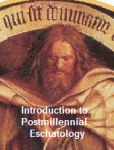
Introduction to Postmillennial Eschatology (10 mp3 lectures)
Southern California Center for Christian Studies seminar.
Lecture presentations and some classroom interaction.
Very helpful definition, presentation, and defense of postmillennialism.
See more study materials at: www.KennethGentry.com
December 22, 2020
REVELATION’S DATE: EXTERNAL EVIDENCE (2)
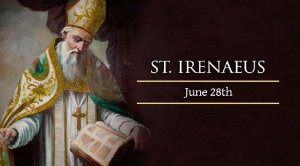 PMW 2020-109 by Kenneth L. Gentry, Jr.
PMW 2020-109 by Kenneth L. Gentry, Jr.
As I continue my series on the dating of Revelation, I will present two of the leading external witnesses for the late date: Irenaeus and Origen.
Irenaeus (A.D. 130-202)
Undoubtedly the most commonly used and strongest external objection to the early date of Revelation is the famous sNovember 2, 2020tatement by Irenaeus (ca. A.D. 180) in book 5 of his Against Heresies. This statement is very early and seems clear and to the point. It occurs at the end of a section in which he is dealing with the identification of Revelation’s “666,” which Irenaeus applies to the Antichrist:
We will not, however, incur the risk of pronouncing positively as to the name of Antichrist; for if it were necessary that his name should be distinctly revealed in this present time, it would have been announced by him who beheld the apocalyptic vision. For that was seen no very long time since, but almost in our day, towards the end of Domitian’s reign.
Nevertheless, several problems reduce the usefulness of this statement for late date advocacy.
First, the translation problem. The statement “that was seen” (or “it was seen”) grammatically may refer either to one of two antecedents. It may refer either to “the apocalyptic vision” (i.e., Revelation) or to “him who beheld the apocalyptic vision” (i.e., John). Greek is an inflected language, containing the pronominal idea in the verb ending. Here the verb may legitimately be translated either “it was seen” or “he was seen.” According to David Aune in his recent, massive commentary, New Testament commentator J. Stolt (1977):
following Wettstein, Novum Testamentum Gracecum (2:746), has argued that ‘the one who saw the Apocalypse’ is the logical subject of eorathe and has proposed that what Irenaeus had in mind was to comment on how long the author of Revelation had lived, not on when he had written Revelation. This is in fact a view argued by various scholars since Wettstein.
The verb ending leaves the question open; Irenaeus does not provide conclusive external evidence.
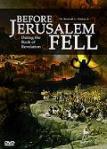
Before Jerusalem Fell Lecture
DVD by Ken Gentry
A summary of the evidence for Revelation’s early date. Helpful, succinct introduction to Revelation’s pre-AD 70 composition.
See more study materials at: www.KennethGentry.com
Second, the contextual indication. Irenaeus’ argument regards the identity of the person represented by “666″:
“We will not, however, incur the risk of pronouncing positively as to the name of Antichrist; for if it were necessary that his name should be distinctly revealed in this present time, it would have been announced by him who beheld the apocalyptic vision. For that or he was seen no very long time since, but almost in our day, towards the end of Domitian’s reign.”
This context seems to demand that Irenaeus refers to John, whom he believes to have lived almost to his (Irenaeus’) own time. When Irenaeus says: “it would have been announced by him” it would most logically follow that his next statement should be translated: “for he was seen no very long time since, but almost in our day.” In other words, Irenaeus appears to be urging: If John, who wrote Revelation with its mysterious 666, had wanted us to know who 666 identified, he would have told us personally, for he lived a long time after writing it, almost in my own time.”
Third, the point of Irenaeus. As Schaff notes a major point of Irenaeus’ work is to demonstrate the living continuity of the Church. He is concerned to show that the truths of Christianity are passed on orally from one generation to another. This purpose in his writing would suggest that his concern was with whether or not John talked about it among those to whom he ministered, rather than on when John wrote.
Fourth, the problem in Irenaeus. If this reference speaks of the date of the writing of Revelation and not the date to which John the author lived, then we have an unusual situation. Earlier in the same chapter Irenaeus speaks of “ancient copies” of Revelation (Heresies 5:30:1). Would he argue in one paragraph about the ancient copies of the book and then a few paragraphs later about the book’s original composition near to his own time? Surely the book was written earlier — in “ancient” times — even though John himself is presumed to have lived almost into Irenaeus’ day.
Fifth, the eyewitnesses of Irenaeus. assuming the common translation of Irenaeus’ statement, we must note that a major element of his proof is his reference to eyewitnesses. But Irenaeus uses eyewitnesses in another place to prove that Jesus lived to be almost fifty years old:
For how had He disciples, if He did not teach? And how did He teach, if He had not a Master’s age? For He came to Baptism as one Who had not yet fulfilled thirty years, but was beginning to be about thirty years old; (for so Luke, who hath signified His years, hath set it down; Now Jesus, when He came to Baptism, began to be about thirty years old:) and He preached for one year only after His Baptism: completing His thirtieth year He suffered, while He was still young, and not yet come to riper age. But the age of 30 years is the first of a young man’s mind, and that it reaches even to the fortieth year, everyone will allow: but after the fortieth and fiftieth year, it begins to verge towards elder age: which our Lord was of when He taught, as the Gospel and all the Elders witness, who in Asia conferred with John the Lord’s disciple, to the effect that John had delivered these things unto them: for he abode with them until the times of Trajan. And some of them saw not only John, but others also of the Apostles, and had this same account from them, and witness to the aforesaid relation. Whom ought we rather to believe? These, being such as they are, or Ptolemy, who never beheld the Apostles, nor ever in his dreams attained to any vestige of an Apostle?
So in the final analysis, his use of eyewitnesses is not always trustworthy, to say the least.
Thus, a re-interpretation of Irenaeus, the major witness for the late date, would appear in order. At the very least the strength of his witness should be lessened due to these very real problems facing the interpreter of Irenaeus.

Blessed Is He Who Reads: A Primer on the Book of Revelation
By Larry E. Ball
A basic survey of Revelation from an orthodox, evangelical, and Reformed preterist perspective. Ball understands John to be focusing on the destruction of Jerusalem and the temple in AD 70. Insightful. Easy to read.
For more Christian studies see: www.KennethGentry.com
Origen (A.D. 185-254)
Origen wrote early in the third century. He is almost universally cited as a late date witness. His famous statement is found in his commentary on Matthew:
The king of the Romans, as tradition teaches, condemned John, who bore testimony, on account of the word of truth, to the isle of Patmos. John, moreover, teaches us things respecting his testimony, without saying who condemned him when he utters these things in the Apocalypse. He seems also to have seen the Apocalypse in the island.
It should strike the unprejudiced mind that this writer — considered one of the leading witnesses for the late date — does not even name the emperor of the banishment. The name of Domitian is merely assumed to apply there, and for two basic reasons: (1) Banishment was more frequently used by Domitian. (2) Irenaeus, a few years earlier, apparently taught that Revelation was received by John in Domitian’s day. But the first reason is a mere probability statement and the second relies on a debatable interpretation of Irenaeus. The reference to Origen is less than convincing.
December 18, 2020
REVELATION’S DATE: EXTERNAL EVIDENCE (1)
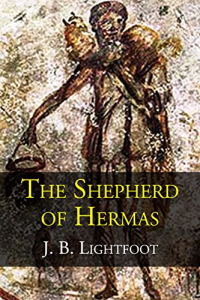 PMW 2020-108 by Kenneth L. Gentry, Jr.
PMW 2020-108 by Kenneth L. Gentry, Jr.
I am continuing a study on the dating Revelation. In this article I will I provide some evidence from church history and tradition. I will begin with the positive indicators for an early date. After that, in the next article I will review the contrary evidence, which is so influential in the late date argument.
The Shepherd of Hermas
1. The Shepherd of Hermas is little known among evangelical laymen today. But in the first three centuries of the Christian era it was so influential that Irenaeus, Origen, Jerome and many others deemed it canonical. [1] It even appears in the Codex Sinaiticus, one of the best preserved ancient copies of the whole Bible.
Virtually all scholars agree that The Shepherd of Hermas draws upon Revelation as the source of its imagery — even late date advocates like H. B. Swete, R. H. Charles, and Robert Mounce. This would demand that Revelation be written, copied, and circulated prior to the composition of the Shepherd.
A good deal of debate exists regarding its date of composition and, thus, this line of evidence cannot serve as a conclusive argument. Nevertheless, the strong possibility exists that it was written in the A.D. 80s. In fact, Philip Schaff decisively supports an early date for The Shepherd, even allowing that it most probably was written by the very Hermas mentioned in Romans. J. B. Lightfoot cites several writers supportive of the earlier date: Cotelier, Cave, Lardner, Gallandi, Lumper, Lachmann, Sprinzl. More recently still, Lawson, Goodspeed, and others concur in the view that it was written in the A.D. 90s.
The two leading evidentiary avenues are: (1) It was written by a Hermas, who seems to be the one Paul refers to in Romans 16:14. (2) Many church fathers thought it canonical. This suggests its composition around the time of the apostles, or shortly after. If this date, as argued by John A. T. Robinson and others, is correct, then Revelation, upon which it depended, would have been written earlier — long before A.D. 95 and almost certainly pre-A.D. 70.
Before Jerusalem Fell (Kindle version) (by Ken Gentry)
Doctoral dissertation defending a pre-AD 70 date for Revelation’s writing. Thoroughly covers internal evidence from Revelation, external evidence from history, and objections to the early date by scholars.
See more study materials at: www.KennethGentry.com
Papias
2. Papias (A.D. 60-130), a disciple of John, writes that James and John suffered martyrdom together at the hands of the Jews. We know that James died before the destruction of the temple, and even late date advocate H. B. Swete admits that Papias must have felt at the very least that John died no later than the destruction of the temple. This would make Revelation, if written by John, to be earlier still.
The Muratorian Canon
3. The Muratorian Canon (ca. A.D. 170) is the earliest surviving list of canonical books. In this very important manuscript we read: “The blessed Apostle Paul, following the rule of his predecessor John, writes to no more than seven churches by name.” Consequently, Paul’s last writing to a church could not have preceded John’s writing of Revelation, for here we read that Paul follows John in writing to seven churches. This demands that the writer hold a view of date earlier than A.D. 67 or 68 for Revelation, in that Paul’s was beheaded in A.D. 67-68.
Clement of Alexandria
4. Clement of Alexandria (A.D. 150-215) does not specifically mention the name of the emperor of the banishment. But he does believe Revelation is inspired revelation from God and was written by the apostle John. And he dogmatically states in his Miscellanies 7:17: “The teaching of our Lord at His advent, beginning with Augustus and Tiberius, was completed in the middle of the times of Tiberius. And that of the apostles, embracing the ministry of Paul, ends with Nero.” Thus, he is a witness for the early date of Revelation.
Notes
1. Jerome, On the Lives of Illustrious Men 10. Irenaeus Against Heresies 4:20:2.
December 15, 2020
REVELATION’S DATE: INTERNAL EVIDENCE (3)
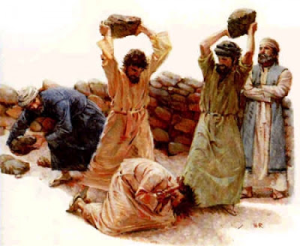 PMW 2020-107 by Kenneth L. Gentry, Jr.
PMW 2020-107 by Kenneth L. Gentry, Jr.
The final evidence from Revelation’s self-witness that I will mention focuses on the relationship of the Jew to Christianity in Revelation. And although there are several aspects of this evidence, I will just briefly introduce it. We may illustratively refer to two important passages and their implications regarding:
Christianity and Israel
First, when John writes Revelation, by all appearances Christianity is in its early, formative, “Jewish” stage. Initially Christians tended to mingle with the Jews (since most of them were Jewish), considering themselves members of the true Israel, the “continuing Israel,” as it were.
The Jews trusted in and boasted of descending from Abraham [1] and circumcision was the distinguishing covenantal mark of the Jews. [2] Yet early Christianity applied to itself terms historically associated with Israel and her privileges. Paul wrote that Christians are “the seed of Abraham” ( Rom. 2:28-29; Phil. 3:3; Col. 2:11) and “the circumcision” (Rom. 2:28-29; Phil. 3:3; Col. 2:11), and the “temple of God.”
In fact, Paul rebukes the racial Jew not committed to Jesus Christ: “He is not a Jew who is one outwardly; neither is circumcision that which is outward in the flesh” (Rom. 2:28). Peter follows Paul’s practice; he designates Christians as “stones” being built into a “spiritual house” (1 Pet. 2:5) and applies Old Testament designations of Israel to the Church. Christians are “a chosen generation, a royal priesthood, an holy nation” (1 Pet. 2:9-10; Exo. 19:5-6; Deut. 7:6; 14:2; 26:18). Both Peter and Paul call Christians “a people for God’s possession” (Eph. 1:14; Titus 2:14; 1Pet. 2:10), a familiar Old Testament designation for Israel (Rom. 4:13-17; Gal. 3:6-9, 29; cp. Exo. 19:5; 34:9; Deut. 4:20; 7:6; 14:2; 26:18; Psa. 135:4.).
After the destruction of the temple (A.D. 70), however, the tendency for Christians to inter-mingle with the Jews ceased. In fact, this tendency was beginning to break down altogether by the time of the writing of Hebrews in the mid-60s. There we hear warnings of Christian judgments upon the Jews who apostatize back into Judaism (Heb. 2:1-6; 6:1-4; 10: 26-36). Shortly after the Jewish War Gamaliel II in A.D. 80 inserted in the Jewish daily prayer (Shemone Esre) a curse on the Christians: “Let the Nazarene [sc. Christian] and the Menim perish utterly.”
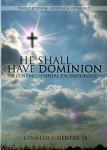
He Shall Have Dominion
(paperback by Kenneth Gentry)
A classic, thorough explanation and defense of postmillennialism (600+ pages). Complete with several chapters answering specific objections.
See more study materials at: www.KennethGentry.com
Interestingly, the Christian writer Barnabas in the A.D. 80s makes a radical “us/them” division between Israel and the Church (Barnabas 13:1).
Now what does this have to do with Revelation? In Revelation 2:9 John is still applying Jewish terms to Christians: There we read of Jesus’ word to the churches of the day: “I know your tribulation and your poverty (but you are rich), and the blasphemy by those who say they are Jews and are not, but are a synagogue of Satan.” In the early Christian’s minds, the non-Christian Jews merely called themselves “Jews”; they were not true Jews. This suggests a date prior to the final separation of Israel and Christianity. This separation was beginning in its earliest stages with the Neronic persecution (when Rome began to recognize a distinction between Judaism and Christianity); it was finalized with the temple’s destruction (when the Christians turned their backs on the temple).
Jews and Christians
Second, at the time John writes, Jewish/Christian relations are at the beginning of a fundamental change. Revelation 3:9 reads: “Behold, I will cause those of the synagogue of Satan, who say that they are Jews, and are not, but lie — behold, I will make them to come and bow down at your feet, and to know that I have loved you.”
John here points to the approaching humiliation of the Jews, noting that God will — in the near future, cp. 1 Thess. 2:14-16; Heb. 8:13 — vindicate his Church against them. In effect, he would make the Jews to lie down at the Christian’s feet. This refers to nothing other than the destruction of Israel and the temple, which Christ prophesied earlier (Matt. 23:35 — 24:2). After that horrible event, Christians began using the temple’s destruction as an apologetic for and vindication of Christianity. Justin Martyr’s First Apology 32 is an excellent illustration:
And the prophecy, “He shall be the expectation of the nations,” signified that there would be some of all nations who should look for Him to come again. And this indeed you can see for yourselves, and be convinced of by fact. For of all races of men there are some who look for Him who was crucified in Judea, and after whose crucifixion the land was straightway surrendered to you as spoil of war. And the prophecy, “binding His foal to the vine, and washing His robe in the blood of the grape,” was a significant symbol of the things that were to happen to Christ, and of what He was to do. For the foal of an ass stood bound to a vine at the entrance of a village, and He ordered His acquaintances to bring it to Him then; and when it was brought, He mounted and sat upon it, and entered Jerusalem, where was the vast temple of the Jews which was afterwards destroyed by you.
Although there are other arguments regarding the Jewish character of Revelation (its Hebraic grammar, Jewish symbols, numerous Old Testament allusions, reference to the twelve tribes, allusions to the priesthood, and so forth), the point is clear enough: When John writes Revelation, Christianity is not yet wholly separated from Israel. After A.D. 70 the separation is full and permanent. This is strong socio-cultural evidence for a pre-A.D. 70 composition.
Israel in the Bible and History (9 mp3 lectures)
by Ken Gentry
The people of Israel are the people of God. But the modern church is divided over the nature, call and identity of Israel. This lecture series covers key issues for understanding the biblical concept of Israel.
See more study materials at: www.KennethGentry.com
Conclusion to Three-part Argument
Thus, we see from the architectural evidence of the standing temple (Rev. 11:1-2), the political evidence regarding the seven kings (Rev. 17:9-10), and the socio-cultural evidence of the Israel/Church relations (Rev. 2:9; 3:9) that John must have composed Revelation prior to the destruction of the temple in August, A.D. 70, and even the death of Nero Caesar in June of A.D. 68.
Interestingly, such evidences from the text have led liberals to formulate a patchwork, higher critical view of the text of Revelation. They see certain of these (and other) elements as originating in earlier documents, but then being incorporated later and even anachronistically in Revelation. For those who hold to a conservative view of inspiration, the unity and integrity of the text of Revelation forbids such a treatment of the text — and demands a pre-A.D. 70 composition.
Notes
1. We read often of “the God of Abraham” (Gen. 28:13; 31:42, 53; Exo. 3:6, 15-16; 4:5; 1 Kgs. 18:36; 1 Chr. 29:18; 2 Chr. 30:6; Psa. 47:9; Matt. 22:32; Mark 12:36; Luke 20:37; Acts 3:13; 7:32). The Jews expected blessings in terms of their Abrahamic descent (Matt. 3:9; 8:11; Luke 3:8; Luke 13:16, 28; Luke 16:23-30; 19:9; John 8:39, 53; Rom. 11:1; 2 Cor. 11:22).
2. Circumcision is the special sign of God’s covenant with Abraham and Israel (Gen. 17:10, 13). Circumcision is mentioned 86 times in the Scriptures; the uncircumcised are mentioned 61 times.
December 11, 2020
REVELATION’S DATE: INTERNAL EVIDENCE (2)
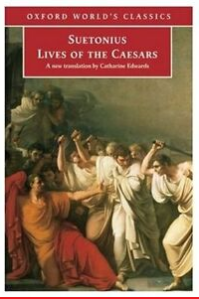 PMW 2020-106 Kenneth L. Gentry, Jr.
PMW 2020-106 Kenneth L. Gentry, Jr.
In Revelation 17:9-10 John records a vision of a seven-headed Beast. In this vision we discover clear evidence that Revelation was written before the death of Nero (June 8, A. D. 68), well before the temple’s destruction in August, A.D. 70:
Here is the mind which hath wisdom. The seven heads are seven mountains, on which the woman sitteth. And there are seven kings: five are fallen, and one is, and the other is not yet come; and when he cometh, he must continue a short space.
Perhaps no point is more obvious in Revelation than this: Rome is here symbolized by the seven mountains. After all, Rome is the one city in history that is recognized for its seven hills: the Palatine, Aventine, Caelian, Esquiline, Viminal, Quirinal, and Capitoline hills. The Roman writers Suetonius and Plutarch refer to the first century festival in Rome called Septimontium, i.e. the feast of “the seven hilled city.” The Coin of Vespasian (emperor A.D. 69-79) pictures the goddess Roma as a woman seated on seven hills. The famed seven hills of Rome are mentioned time and again by ancient pagan writers such as Ovid, Claudian, Statius, Pliny, Virgil, Horace, Propertius, Martial, and Cicero, as well as by Christian writers, such as Tertullian and Jerome. Indeed, “there is scarce a poet that speaks of Rome but observes it.”
John wrote to be understood (Rev. 1:3) and specifically points out here that the wise one will understand (17:9). The recipients of Revelation lived under the rule of Rome, which was universally distinguished by its seven hills. How could the recipients, living in the seven historical churches of Asia Minor and under Roman imperial rule, understand anything else but this geographical feature?
[image error]For more information and to order click here.
" data-medium-file="https://postmillennialismtoday.files...." data-large-file="https://postmillennialismtoday.files...." class="alignright size-full wp-image-211" src="https://postmillennialismtoday.files...." alt="" />
Perilous Times: A Study in Eschatological Evil (by Ken Gentry)
Technical studies on Daniel’s Seventy Weeks, the great tribulation, Paul’s Man of Sin, and John’s Revelation.
See more study materials at: www.KennethGentry.com
We learn further that the seven heads also represent a political situation in which five kings have fallen, the sixth is, and the seventh is yet to come and will remain but for a little while. It is surely no accident that Nero was the sixth emperor of Rome. Flavius Josephus, the Jewish contemporary of John, clearly points out that Julius Caesar was the first emperor of Rome and that he was followed in succession by Augustus, Tiberius, Caius, Claudius, and Nero (Antiquities 18; 19). We learn this also from other near contemporaries of John, including the Jewish 4 Ezra 11 and 12, and the Sibylline Oracles, books 5 and 8; the Christian Barnabas 4. The matter is confirmed just a little later from Roman historians Suetonius, Lives of the Twelve Caesars, and Dio Cassius, Roman History 5. The text of Revelation says that of the seven kings “five have fallen.” These emperors are dead, when John writes.
But the verse goes on to say “one is.” That is, the sixth one is then reigning even as John wrote. That would be Nero Caesar, who assumed imperial power upon the death of Claudius in October, A.D. 54, and remained emperor until his death in A.D. 68.
John continues: “The other is not yet come; and when he cometh, he must continue a short space.” As the Roman Civil Wars broke out in rebellion against Nero, Nero committed suicide on June 8, A.D. 68. When John writes, the seventh king/emperor was “not yet come.” That would be Galba, who assumed power in June, A.D. 68. But he was only to continue a “short space.” His reign lasted but seven months, until January 15, A.D. 69.
Now some evangelical commentators, such as John Walvoord, would attempt to circumvent this political evidence by pointing out that: (1) It is taken from a highly figurative vision and (2) it is introduced by a call for “the mind which has wisdom,” thereby indicating the difficulty of the interpretation. But this is twisting the text to say what it does not intend.
Upon seeing the symbolic vision itself, John was in fact perplexed: he “wondered with great wonder” (Rev. 17:1, 7a). But an interpretive angel appears with the promise that he would show John the proper understanding (Rev. 17:7): “Why do you wonder? I shall tell you the mystery.” Revelation 17:9 and 10 is the explication of the vision. It is not given to make the matter more difficult! The inherent difficulty requiring wisdom lay in the fact that the seven heads had a double referent: geographical and political. The angel functions here much like the angel in Revelation 7:13, 14 — to interpret the revelational data, not to confound the already perplexed apostle.
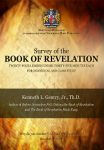
Survey of the Book of Revelation
(DVDs by Ken Gentry)
Twenty-four careful, down-to-earth lectures provide a basic introduction to and survey of the entire Book of Revelation. Professionally produced lectures of 30-35 minutes length.
See more study materials at: www.KennethGentry.com
Thus, we see that while John wrote, Nero was still alive and Galba was looming in the near future. Revelation could not have been written after June, A.D. 68, according to the internal political evidence.
December 8, 2020
REVELATION’S DATE: INTERNAL EVIDENCE (1)
[image error]PMW 2020-105 Kenneth L. Gentry, Jr.
As I open my argument for the early dating of Revelation, I will first engage the internal indicators of time discoverable in Revelation. This engages the evidence from Revelation’s self-witness. In that I hold to the full inspiration and inerrency of Scripture, I am convinced that these are the most fundamental evidences. Later I will consider the external evidence, the material derived from church tradition. Generally, the late-date advocates begin with the evidence from tradition, and the early-date advocates with the evidence from self-witness. I am convinced that the late-date reliance upon external indicators is methodologically flawed in this book containing so many historical and cultural indicators.
As I begin, let me point out what should be obvious: the issue cannot finally be resolved in the small amount of space available. Indeed, I wrote my doctoral dissertation of over 450 pages on the subject. Nevertheless, I will lay before the reader some compelling introductory groundwork which I trust will provide the prima facie plausibility for the early date. I will focus on three internal evidences for the early date.
In this article I will open the internal evidence with the temple in Revelation
In Revelation 11:1,2 John informs us:
There was given me a reed like unto a rod: and the angel stood, saying, Rise, and measure the temple of God, and the altar, and them that worship therein. But the court which is without the temple leave out, and measure it not; for it is given unto the Gentiles: and the holy city shall they tread under foot forty and two months.
Here we find a temple standing in a city called “the holy city.” It seems indisputably clear that a Christian Jew, such as John, would have in mind historical Jerusalem, when he speaks of “the holy city.” This is so for two basic reasons: (1) Jerusalem is frequently called such in Scripture: Isaiah 48:2; 52:1; Nehemiah 11:1-18; Matthew 4:5; 27:53. (2) Verse 8 informs us that this is the city where “also our Lord was crucified.” The place of our Lord’s crucifixion was no other city than historical Jerusalem, according to the clear testimony of Scripture (Luke 9:22; 13:32; 17:11; 19:28).
Now what temple stood in Jerusalem? Obviously the Jewish Temple ordained of God, wherein the Jewish sacrifices were offered, the first century temple known as Herod’s Temple. This reference to the temple must be that historical structure for three reasons:
Location
(1) It was located in Jerusalem, as the text clearly states. The audience could have thought of nothing else than that famous temple, which was noted for its magnificence in the writings even of Roman historian Tacitus: the Jewish temple “was famous beyond all other works of men,”a “temple of immense wealth.”’ Ancient accounts of the temple portray its imposing beauty, accounts such as those we find in Josephus and the Jewish Mishnah.’ The first century Jewish philosopher Philo (25 B.C.—A.D. 40) says its was “beautiful beyond all possible description,” and that “the buildings of it are of most exceeding beauty and magnificence, so as to be universal objects of admiration to all who behold them, and especially to all foreigners who travel to those parts, and who comparing them with their own public edifices, marvel both at the beauty and sumptuousness of this one.”’ The ancient Jewish rabbis exult in the temple: “He that never saw the Temple of Herod never saw a fine building” (Baba Bathra).
[image error]
Before Jerusalem Fell Lecture
DVD by Ken Gentry
A summary of the evidence for Revelation’s early date. Helpful, succinct introduction to Revelation’s pre-AD 70 composition.
See more study materials at: www.KennethGentry.com
Time Frame
(2) John’s prophesies that the temple he has in mind will be under assault for a period of forty-two months. The “forty-two months” (v. 2) or “1260 days” (v. 3) happens to parallel the period of the Jewish War with Rome from its formal engagement until the Temple was destroyed. Nero commissioned his most capable general Flavius Vespasian to engage Israel in war in February, A.D. 67; Vespasian actually entered the Promised Land and engaged in battle that Spring: “When Vespasian arrived the following Spring [A.D. 67] to take charge of operations, he steadily reduced Galilee [and] Peraea. . . . Titus [Vespasian’s son] began the siege of Jerusalem in April, 70. . . . By the end of August the Temple area was occupied and the holy house burned down.”’ From Spring A.D. 67 to August/September A.D. 70 is a period of forty-two months. The time-frame correspondence is tolerably precise.
Structure
(3) The structure of Revelation 11:1, 2 parallels Jesus’s statement in his Olivet Discourse as found in Luke 21:24. In Luke 21:5-7, the disciples specifically point to the temple to inquire of its future. Jesus tells them that it will soon be destroyed stone by stone. In Luke 21:24 he speaks in terms that seem clearly to form the foundation for Revelation 11:1,2.
Revelation 11:2: “The court which is without the temple leave out, and measure it not; for it is given unto the Gentiles: and the holy city shall they tread under foot forty and two months.”
Luke 21:24: “Jerusalem will be trampled underfoot by the Gentiles until the times of the Gentiles be fulfilled.”
Revelation 11 incorporates the reference to the “nations” (or Gentiles), the trampling under foot, and the city of Jerusalem (“Jerusalem”/”holy city”). The two passages speak of the same event: the looming destruction of Jerusalem. And the Olivet Discourse ties the destruction of the temple to “this generation” to whom Christ spoke (Matt. 24:34; Mark 13:30; Luke 21:32).
We know as a matter of clear historical and archaeological record that the temple was destroyed in August, A.D. 70. Archaeologist Kathleen Kenyon wrote:
The recent excavations have provided striking evidence of Titus’s destruction. . . . In the destruction of these buildings, walls were razed, paving stones torn up, and the drain clogged with material firmly dated to the last part of the century by the pottery. In the drain were human skulls and other bones, washed down from the ruined city higher up the slope.
Even more dramatic were the finds in Site N, the area in which the fine street of Herod Agrippa was uncovered. Reference has already been made to the collapse of the staircase leading east from the street. The tumble of stones was remarkable even for Jerusalem where tumbles of stones are a phenomenon all too common in excavations. The magnitude of the disaster perhaps made a special impact owing to the excellence of the destroyed buildings as shown by the magnificently-dressed stones, and the period of the collapse was very precisely pin-pointed by the discovery at its base of a hoard of coins of the First Revolt, hidden by defenders who could not recover them before the city was overwhelmed by Titus. Even more indicative of the complete desolation of this area that had formed part of the city of Herod Agrippa was the state of the ruins. . . . It was two centuries or more before human activity began once more to make its mark in the whole area of ancient Jerusalem.’
The Early Date of Revelation and the End Times: An Amillennial Partial Preterist Perspective
By Robert Hillegonds[image error]
This book presents a strong, contemporary case in support of the early dating of Revelation. He builds on Before Jerusalem Fell and brings additional arguments to bear.
See more study materials at: www.KennethGentry.com
And this was a major apologetic point driven home by early Christians, as we may discover in Barnabas 16 (ca. A.D. 75-100). In the Epistle of Ignatius to the Magnesians 10 Ignatius wrote: “It is absurd to speak of Jesus Christ with the tongue, and to cherish in the mind a Judaism which has now come to an end.” Other church fathers follow suit: Justin Martyr, Apology 32 (A.D. 147); Melito of Sardis, Fragments (A.D. 160-180); and others.
But while John wrote, the temple was still standing, awaiting its fast approaching doom (Rev. 11:1-2). If John wrote this twenty-five years after the temple’s fall it would be horribly anachronous. Such requires a suppressed premise of an unmentioned rebuilding of the temple, despite John’s silence on the very recent catastrophic destruction of that famous temple he and all Jews knew. The reference to the temple is hard architectural evidence (no pun intended) that gets us back into an era pre-A.D. 70.
I will move on to my second line of evidence in my next blog posting.
December 4, 2020
INTRODUCTION TO REVELATION’S DATE
[image error]PMW 2020-104 by Kenneth L. Gentry, Jr.
Although this topic is basically an academic one, its ultimate issue is extremely practical — hence the popular flavor of my presentation. Resolving the question of Revelation’s compositional date is one of the most — if not the most — important issues facing the interpreter. We may see its significance both regarding the interpretive and the practical questions revolving around the book.
Dating and Interpretation
First, interpretively, Revelation’s date exercises a tremendous influence upon its proper understanding. The current majority of biblical scholars is in fundamental disagreement with the majority of the scholars from 75 years ago and earlier. The current opinion — the late-date view — is that John wrote Revelation while in exile during the closing days of the reign of Domitian Caesar, in about A.D. 95 or 96. This contradicts the nineteenth century view — the early-date view — which held that Revelation was written by John prior to the destruction of Jerusalem and the Temple in A.D. 70. This position was held by such worthies as B. F. Westcott, F. J. A. Hort, John Lightfoot, Alfred Edersheim, Philip Schaff, Milton Terry, and others.
Early-date advocates generally understand Revelation’s prophecies to be dealing with the tremendous spiritual, social, political, and cultural upheaval leading up to and culminating in the destruction of Jerusalem in the ill-fated Jewish War of A.D. 67-70. This war effectively served as the birth-pangs delivering Christianity from its mother’s womb (Israel), thereby effecting an irremediable separation between these two great monotheistic religions. As Nicodemus asked: John 3:4 “How can one be born when he is old? He cannot enter a second time into his mother’s womb and be born, can he?” These first century issues also include the first Roman persecution of Christianity under Nero Caesar (A.D. 64-68), the catastrophic Roman Civil Wars (A.D. 68-69), and the extinction of the Julio-Claudian line of emperors with the demise of Nero (A.D. 68). Thus, Revelation would highlight the foundation of the kingdom in history.
Four Views on the Book of Revelation[image error]
(ed. by Marvin Pate)
Helpful presentation of four approaches to Revelation. Ken Gentry writes the chapter on the preterist approach to Revelation, which provides a 50 page survey of Revelation .
See more study materials at: www.KennethGentry.com
Though yet a minority view today, within in the past twenty years a growing number of scholars is returning to a date earlier than A.D. 95-96. These diverse scholars include liberals C. C. Torrey, Rudolf Bultmann, and John A. T. Robinson; evangelicals C. F. D. Moule, F. F. Bruce, and R. B. Moberly; and reformed conservatives Cornelius Vanderwaal, Jay Adams, Greg Bahnsen, and R. C. Sproul.
The late-date view, on the other hand, allows for an almost infinite variety of interpretations. The three other basic schools of interpretation (other than preterism) prefer a late-date of composition: historicism, idealism, and futurism. Most of the supposed possibilities relate to events lying in the distant future, events betokening the end of world history. As such, Revelation would be speaking of the conclusion of the kingdom, or of the Church Age, if you will.
Thus, the date one assigns Revelation has the potential for placing the majority of its prophecies, particularly its judgment scenes, either at the beginning or at the end of Christian history. The issue of dating may literally turn Revelation on its head.
Dating and Expectations
Second, practically, the dating of Revelation has a great bearing on our current outlook and prospects, on our eschatology and worldview. Our understanding of Revelation has great social and cultural issues hanging in the balance:
Does Revelation speak of a looming great tribulation, which soon will bring upon the scene of contemporary history irresistible worldwide chaos and upheaval? Or did it inform the first century Christians of grave and trying times they would face, which would demonstrate that Christianity could weather the most furious storms, thereby bracing them for the long haul?
Should we brace ourselves for the worst and, as Hal Lindsey urges us, “Live like people who don’t expect to be around much longer”? Or may we look to the future as lying before a conquering Church, which has already endured the Great Tribulation and now seeks victory in the world over the long haul?
[image error]
Navigating the Book of Revelation (by Ken Gentry)
Technical studies on key issues in Revelation, including the seven-sealed scroll, the cast out temple, Jewish persecution of Christianity, the Babylonian Harlot, and more.
See more study materials at: www.KennethGentry.com
Of course we must determine the particular date for Revelation on the historical and exegetical evidence, not upon our psycho-social predisposition. So let us now consider the evidence for Revelation’s dating. The view that I will be defending is that Revelation was written by the Apostle John in about A.D. 65 or 66, just after the outbreak of the Neronic persecution and just prior to the outbreak of both the Jewish War and the Roman Civil Wars. I will begin this study in my next article.
December 1, 2020
OPENING REVELATION
[image error]PMW 2020-103 by Kenneth L. Gentry, Jr.
The first word in the Book of Revelation, the word which became its title, is: apokalupsis, which means “unveiling, revelation.” Despite this title Revelation is undoubtedly the most difficult to interpret, most hotly debated, and most abused book in all of Scripture. The book is so perplexing that John himself could not understand portions of it (Rev. 7:13-14; 17:6-7). Indeed, its abuse seems directly attributable to its difficulty: The less theologically astute and exegetically trained the “commentator,” the more confident his assertions — and, unfortunately, the greater the sales of his books.
Walter F. Adeney noted that “imagination runs riot with the elaborate fancies of this marvelous book.” Anthropologist and commentator Vacher Burch in his thought-provoking Anthropology and the Apocalypse lamented: “The Book of the Revelation of Jesus Christ is the most difficult writing in the New Testament. No plainer proof of this is needed than the fact that most often it has been artificially sequestered so as to yield strange chronology and stranger sense, by the ignorant and the wise. The long history of its interpretation seems to demonstrate that the majority has desired it to be only a semi-magical writing.”
With evident concern, Donald W. Richardson observed that “the ‘lunatic fringe’ of thinking on the times and seasons and last things of history has always reveled in the Revelation.” With a concern akin to that of Richardson, Greville Lewis complained that “through the centuries this book has been the happy hunting ground of the cranks who believed that its cryptic messages were meant to refer to the events of their own troubled age.” William Barclay follows suit when he stated that Revelation has “become the playground of religious eccentrics.”
[image error]
Blessed Is He Who Reads: A Primer on the Book of Revelation
By Larry E. Ball
A basic survey of Revelation from an orthodox, evangelical, and Reformed preterist perspective. Ball understands John to be focusing on the destruction of Jerusalem and the temple in AD 70. Insightful. Easy to read.
For more Christian studies see: www.KennethGentry.com
Quite naturally, then, Revelation has perplexed the great Christian exegetes of history. The Latin church father Jerome (A.D. 340-420) lamented long ago that it contained “as many words as mysteries.” Martin Luther (1483-1546), the famed reformer and untiring interpreter of Scripture, originally rejected Revelation as non-canonical, complaining, “My Spirit cannot adapt itself to the book.” Fellow reformer Ulrich Zwingli (1484-1531) refused to take a doctrinal proof-text from Revelation. Even John Calvin (1509-1564) omitted Revelation from his prodigious commentary on the Bible. R. H. Charles (1855-1931), in his celebrated magnum opus on Revelation, states that it took him twenty-five years to complete his commentary.
Though they concur in little else, leading interpreters agree on the difficulty Revelation presents to the would-be exegete:
• Milton S.Terry: “No portion of the Holy Scripture has been the subject of so much controversy and of so many varying interpretations.”
• Eduard Wilhelm Reuss: “Ideas of the Apocalypse are so widely different that a summary notice of the exegetical literature, mingling all together, would be inexpedient.”
• B. B. Warfield: Revelation is “the most difficult book of the Bible: it has always been the most variously understood, the most arbitrarily interpreted, the most exegetically tortured.”
• Marvin R. Vincent: “This document has given rise to voluminous controversy.”
• H. B. Swete: “To comment on this great prophecy is a harder task than to comment on a Gospel, and he who undertakes it exposes himself to the charge of presumption. I have been led to venture upon on what I know to be dangerous ground.”
• Isbon T. Beckwith: “No other book, whether in sacred or profane literature, has received in whole or in part so many different interpretations. Doubtless no other book has so perplexed biblical students throughout the Christian centuries down to our own times.”
•A. T. Robertson: “Perhaps no single book in the New Testament presents so many and so formidable problems as the Apocalypse of John.”
• George R. Beasley-Murray: “Revelation is probably the most disputed and difficult book in the New Testament.”
• George Ladd: “Revelation is the most difficult of all New Testament books to interpret.”
• John F. Walvoord: “Attempts at its exposition are almost without number, yet there continues the widest divergence of interpretation.”
• Leon Morris: “Some of the problems of this book are enormously difficult and I certainly have not the capacity to solve them.” Indeed, it is “by common consent one of the most difficult of all the books of the Bible.”
• Alan F. Johnson: For “the modern reader” Revelation “is the most obscure and controversial book in the Bible.”
• C. Marvin Pate: “The Apocalypse is arguably the most controversial book in the Bible. . . . A hermeneutical thicket awaits the interpreter of Revelation.”
The Early Date of Revelation and the End Times: An Amillennial Partial Preterist Perspective
By Robert Hillegonds[image error]
This book presents a strong, contemporary case in support of the early dating of Revelation. He builds on Before Jerusalem Fell and brings additional arguments to bear.
See more study materials at: www.KennethGentry.com
As is lamented tongue-in-cheek: Wherever you find five commentators on Revelation, you will find six different views. Nevertheless, I am convinced that if we can get a handle on three important questions, we would be well on our way to a fundamentally sound and basic understanding of it. Those questions are:
“When was Revelation written?”
“How shall we approach it?”
“What is its basic theme?”
These three thematic questions will structure my approach to the topic, beginning in my next installment And although answering these questions will be tremendously helpful in understanding Revelation, obviously it will not resolve all the issues that arise.
Click on the following images for more information on these studies:
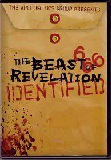

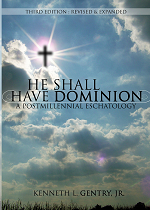
November 27, 2020
BAHNSEN AND REVELATION STUDIES
[image error]PMW 2020-102 by Kenneth L. Gentry, Jr.
I am writing this article as a brief tribute to Dr. Greg L. Bahnsen (Sept. 17 1948–Dec. 11, 1995) regarding his influence on Revelation studies, especially as the twenty-fifth anniversary of his death is approaching. He certainly is gone, but not forgotten.
Dr. Bahnsen’s formal training and primary ministry focus were in the field of philosophy, including Christian apologetics and biblical ethics. Nevertheless, deep interest, wide learning, careful analysis, and perceptive insights touched on many and varied fields of study. Among his leading interests was eschatology and the Book of Revelation. And though he never released a commentary on this majestic prophecy, he did produce sixty-three hours of taped expositional lectures, which have been very popular and quite influential in reformed circles. His enormous catalog of audio lectures at Covenant Media Foundation includes other, more compact lecture series on Revelation, as well. Bahnsen engaged exhaustive and careful research into Revelation over a number of years with a view to writing a commentary. Unfortunately, he was not able to finish the project before his entry into glory in December of 1995.
The Beast of Revelation[image error]
by Ken Gentry
A popularly written antidote to dispensational sensationalism and newspaper exegesis. Convincing biblical and historical evidence showing that the Beast was the Roman Emperor Nero Caesar, the first civil persecutor of the Church. The second half of the book shows Revelation’s date of writing, proving its composition as prior to the Fall of Jerusalem in A.D. 70. A thought-provoking treatment of a fascinating and confusing topic.
For more study materials, go to: KennethGentry.com
I believe it safe to say that Dr. Bahnsen is largely responsible for the recent resurgence in evangelical preterism in general and the preterist approach to Revelation in particular. He produced the large tape set on Revelation in the 1970s while lecturing to seminarians and laymen alike at St. Paul Presbyterian Church in Jackson, Mississippi. Also during his two and one-half year tenure at Reformed Theological Seminary he introduced the subject to a good number of future reformed pastors and Christian educators. Counted among his “converts” to preterism are at least three of his seminary students who have encouraged Revelation studies and preterism to an ever widening audience since his death. These three have either written books on Revelation or touched deeply on Revelation themes through related publications: David Chilton, Gary DeMar, and me, Kenneth L. Gentry, Jr.
David Chilton authored Paradise Restored: An Eschatology of Dominion (1985), which touches on Revelation and related themes. His book, The Days of Vengeance: An Exposition of the Book of Revelation (1987), was Chilton’s largest and most popular work. And though this preterist commentary is flawed by Chilton’s employment of interpretive maximalism (which generated a strong response from Bahnsen), it continues today to introduce the preterist approach to Revelation to new and wider audiences.
Gary DeMar has written Last Days Madness (1991, 1994), which focuses on the Olivet Discourse, the backdrop of John’s Revelation. Not only has DeMar’s book enjoyed several printings, but he has also lectured and debated on Revelation themes through his American Vision ministry. His monthly magazine Biblical Worldview frequently focuses on preterist themes. DeMar has also produced and marketed a video tape of an popular, informal discussion on Revelation, titled Demystifying Revelation.
I had the joy and privilege of co-authoring a book with Dr. Bahnsen in which I focused on preterism and eschatology: House Divided: The Break-up of Dispensational Theology (1989, 1997). I wrote my doctorate on the date of the writing of Revelation (1988), which was published under the title of Before Jerusalem Fell: Dating the Book of Revelation (1989, 1997). It is dedicated to his memory with these words: “Dedicated to Dr. Greg L. Bahnsen who first startled me with his commitment to and then convinced me of the early date of Revelation.”
In addition to frequent seminars, debates, and interviews on the subject, I have also published or am preparing for publication the following works which directly touch on Revelation themes from a preterist perspective: The Beast of Revelation (1989, 1994), a popularized summation of Before Jerusalem Fell. He Shall Have Dominion: A Postmillennial Eschatology (1992, 1997, 2009), which has two chapters dedicated to Revelation themes. “The Preterist View” in Zondervan’s Four Views on the Book of Revelation (1997). Perilous Times: A Study in Eschatological Evil (1998, which has two chapters dedicated to Revelation. And me study, titled: The Book of Revelation Made Easy (2008, 2010). Navigating the Book of Revelation: Special Studies on Important Issues (2010). In 2015 I even completed a two-volume 1700 page academic commentary on Revelation, titled: The Divorce of Israel: A Redemptive-Historical Study of Revelation (which should be published in early 2021).
For several years I continued to oversee Revelation studies in four academic settings: Christ College, Bahnsen Theological Seminary, Whitefield Theological Seminary, and Trinity Bible College and Seminary (the world’s largest distance learning program).
[image error]
Before Jerusalem Fell Lecture
DVD by Ken Gentry
A summary of the evidence for Revelation’s early date. Helpful, succinct introduction to Revelation’s pre-AD 70 composition.
See more study materials at: www.KennethGentry.com
I have also produced several video series on Revelation: The Beast of Revelation: Identified (my special lecture at the Ligonier Ministries’ 1999 eschatology seminar); Before Jerusalem Fell (a lecture given at an American Vision conference); The Climax of Revelation (Rev. 19–22), a six-lecture conference series given in Myrtle Creek, Oregon. The Keys to the Book of Revelation, a four-part series given at a conference in Greenville, SC. Survey of the Book of Revelation, twenty-four lectures given as a course at Whitefield Theological Seminary in Lakeland, Florida. Your Hope in God’s World, five lectures from a conference in Mount Dora, Florida.
Interestingly, a late convert to the preterist approach to Revelation has provided an even greater impetus to preterism: R. C. Sproul, of the internationally prominent Ligonier Ministries. His work touching on Revelation and his bibliography shows heavy influence from Bahnsen, Chilton, DeMar, and me: The Last Days According to Jesus (Baker, 1998).
Clearly, then, Dr. Bahnsen’s perspective in eschatology is continuing to spread, not only directly through his catalog, but indirectly through his students and others he has influenced. His influence in the field of eschatology parallels his impact in apologetics and ethics. This one scholar has impacted and continues to affect the lives of many lay Christians and ordained scholars through his books, tapes, and students. No scholar has had a greater influence on me than Bahnsen.
Click on the following images for more information on these studies:



Kenneth L. Gentry Jr.'s Blog
- Kenneth L. Gentry Jr.'s profile
- 85 followers



